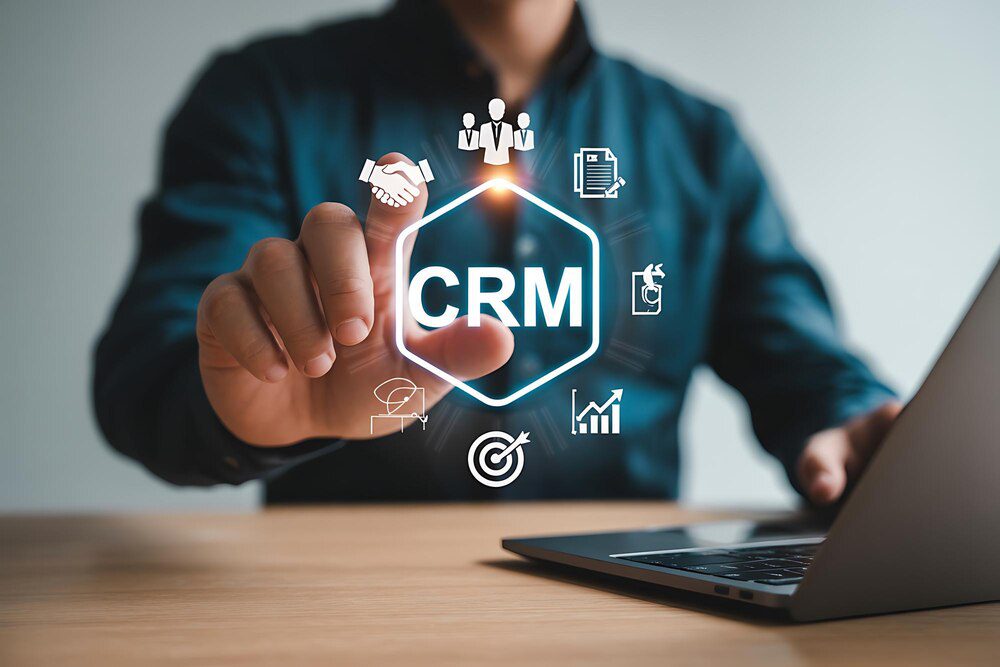Executive Summary
The Story So Far
Why This Matters
Who Thinks What?
In today’s hyper-competitive digital landscape, unlocking enduring customer loyalty hinges on transforming raw Customer Relationship Management (CRM) data into deeply personalized customer journeys. Businesses across every sector are now recognizing that generic interactions no longer suffice; instead, they must leverage the rich, first-party information residing within their CRM systems to craft bespoke experiences that resonate individually with each customer, fostering stronger relationships and driving sustained growth. This strategic shift moves beyond simple segmentation, employing advanced analytics and automation to anticipate needs, provide relevant value, and build an emotional connection that secures long-term allegiance.
The Strategic Imperative of CRM Data
CRM systems are vast repositories of customer intelligence, holding everything from basic demographics and contact information to intricate purchase histories, website interactions, service requests, and communication preferences. This data, however, often remains underutilized, serving primarily as a record-keeping tool rather than a dynamic engine for strategic engagement. The true power of CRM lies in its ability to paint a comprehensive picture of each customer, revealing their unique behaviors, motivations, and pain points across their entire lifecycle.
Moving beyond a transactional view, businesses must now embrace CRM as the central nervous system for customer relationship building. By consolidating data from various touchpoints—sales, marketing, service, and web analytics—organizations can create a unified, 360-degree customer profile. This holistic view is the essential foundation for any meaningful personalization effort, allowing companies to see the customer, not just a series of isolated interactions.
Why Personalization Drives Loyalty
Modern consumers expect experiences that are tailored to their individual needs and preferences. They are increasingly intolerant of irrelevant marketing messages and generic offers, which can quickly lead to disengagement and churn. Personalization, conversely, makes customers feel understood and valued, fostering a sense of connection that significantly enhances loyalty.
Personalized journeys lead to higher engagement rates, improved customer satisfaction, and ultimately, increased customer lifetime value (CLTV). When customers perceive that a brand truly understands them, they are more likely to make repeat purchases, explore new offerings, and even become advocates. This creates a virtuous cycle where loyalty begets more loyalty, reducing acquisition costs and bolstering brand equity.
From Data Points to Dynamic Segments
The journey from raw CRM data to personalized experiences begins with sophisticated segmentation. While traditional demographics-based segmentation is a starting point, true personalization requires moving to dynamic, behavior-driven micro-segments. This involves analyzing patterns in purchase history, browsing behavior, interaction frequency, and response to previous communications.
Advanced analytics and machine learning algorithms play a crucial role here, identifying subtle correlations and predictive indicators that human analysis might miss. These tools can group customers based on their propensity to churn, their likelihood to respond to a specific offer, or their readiness to upgrade. Such dynamic segmentation allows for far more precise targeting and more relevant content delivery.
Crafting the Personalized Customer Journey
A customer journey maps the entire path a customer takes when interacting with a brand, from initial awareness to post-purchase support and advocacy. Personalizing this journey means tailoring every touchpoint and communication to the individual’s current stage, preferences, and recent behaviors. This requires a deep understanding of the customer’s mindset at each step.
For example, a new customer might receive a personalized onboarding sequence, guiding them through product features relevant to their initial purchase. A loyal customer, on the other hand, might receive exclusive early access to new products or personalized recommendations based on their extensive purchase history. The key is to deliver the right message, through the right channel, at the right time.
Key Touchpoints for Personalization
- Marketing Communications: Tailored email campaigns, SMS alerts, and ad retargeting based on browsing history or past purchases.
- Website & App Experiences: Dynamic content, product recommendations, and navigation paths that adapt to user behavior.
- Sales Interactions: Equipping sales teams with comprehensive customer histories to enable more relevant conversations and offers.
- Customer Service: Providing agents with immediate access to a customer’s full interaction history, allowing for faster, more informed, and empathetic support.
- Post-Purchase Engagement: Personalized follow-ups, usage tips, and requests for feedback that align with the specific product or service purchased.
Enabling Technologies and Tools
Achieving hyper-personalization at scale is not feasible without robust technological infrastructure. Several key technologies facilitate the transformation of CRM data into actionable personalized journeys.
Artificial Intelligence (AI) and Machine Learning (ML): These are the engines behind predictive analytics, recommendation engines, and dynamic content optimization. AI can analyze vast datasets to identify patterns, predict future behaviors, and automate the delivery of personalized content in real-time. This includes everything from predicting churn risk to recommending the next best product.
Marketing Automation Platforms (MAPs): MAPs are essential for executing personalized campaigns across multiple channels. They allow businesses to design complex customer journeys with automated triggers, ensuring that messages are delivered at precisely the right moment based on customer actions or inactions.
Customer Data Platforms (CDPs): While CRM manages interactions, CDPs excel at unifying customer data from disparate sources into a single, comprehensive, and persistent customer profile. This unified view feeds into CRM, marketing automation, and other systems, ensuring consistency and accuracy across all personalized efforts.
Integration with E-commerce and Service Platforms: Seamless integration ensures that all customer interactions, whether a website visit, a purchase, or a support ticket, contribute to the unified customer profile. This enables a consistent and personalized experience across all brand touchpoints.
Best Practices and Overcoming Challenges
While the benefits of personalized journeys are clear, their implementation comes with challenges. Data quality is paramount; incomplete or inaccurate CRM data will lead to flawed personalization. Businesses must invest in data hygiene and governance to ensure their insights are reliable.
Privacy concerns and regulatory compliance (like GDPR and CCPA) are also critical. Personalization must be transparent and offer customers control over their data, avoiding a “creepy” feeling. Over-personalization or using data in ways customers don’t expect can erode trust rather than build it. Continuous testing and optimization are also vital; personalized journeys are not static and must evolve with customer behavior and market trends.
Finally, organizational alignment is crucial. Personalization is not just a marketing initiative; it requires collaboration across sales, service, product development, and IT. A customer-centric culture must permeate the entire organization for personalized journeys to truly flourish.
Measuring the Impact of Personalization
To justify investment and drive continuous improvement, it is essential to measure the impact of personalized customer journeys. Key performance indicators (KPIs) include customer lifetime value (CLTV), customer retention rates, churn reduction, engagement metrics (e.g., email open rates, click-through rates), conversion rates, and Net Promoter Score (NPS).
Attribution modeling helps understand which personalized touchpoints and campaigns are most effective in driving desired outcomes. By continuously analyzing these metrics, businesses can refine their personalization strategies, optimize their customer journeys, and maximize their return on investment.
The Future of Customer Loyalty
Transforming CRM data into highly personalized customer journeys is no longer a luxury but a fundamental requirement for building lasting customer loyalty and sustained business growth. By moving beyond generic interactions and embracing the power of individual understanding, businesses can create experiences that truly resonate, fostering deep connections and turning customers into advocates. The future of loyalty belongs to those who master the art and science of personalized engagement, powered by intelligent data utilization.








